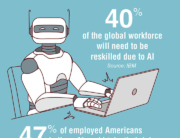Developments from the Staffing Industry Daily News and The Staffing Stream to help you focus on emerging movements that could shape your business for the better.
New hire retention a key issue for most companies.
Nearly all of executives polled in a recent Futurestep survey, 90%, reported retention of new hires is an issue in their organization. Additionally, most executives said between 10% to 25% of new hires leave within the first six months. The top reason new recruits leave their roles is different from what they expected it would be during the hiring process, the survey found.
Now Hiring!
Strong hiring plans in US, Mexico
US employers report the strongest second-quarter hiring outlook since 2009, according to a recent ManpowerGroup Employment Outlook Survey. ManpowerGroup’s survey found 22% of US employers plan to increase staff in the second quarter, up from 19% in the prior quarter’s forecast. In Mexico, 20% of employers reported positive hiring plans for the same period.
Broken Processes
Hiring pros, candidates dish on recruitment challenges.
Only 30% of hiring managers, 22% of talent acquisition professionals, and 41% of candidates are satisfied with their recruitment processes, according to an Allegis Group survey. Meanwhile, 38% of employers cited attracting quality talent as their top recruitment challenge, followed by time to fill open positions at 31% and retaining quality talent at 18%.
Five key traits of staffing’s top leaders.
Aside from passion, commitment and effective communication, what makes a truly great staffing leader? Here are five traits that I consistently see from the industry’s top leaders:
Be a “Pied Piper.” A leader who truly inspires others creates an environment in which staffing team members exert higher levels of discretionary effort and are much more invested in the company’s outcomes — even when times are tough.
Be a strategic thinker. A strategic staffing leader can predict market drivers, knows how to shift resources, and moves beyond incremental improvements.
Be resilient. Knowing what’s around the next corner is one thing; being flexible enough to adapt and bounce back is quite another. Resilient staffing leaders respond more effectively to business disruptors, conflict or other threats because they are better equipped to:
Sell value – not services. Clients don’t want vendors that sell services; they want partners that deliver solutions.
The most successful staffing leaders understand the strategic role staffing plays in their clients’ businesses – and how to create solutions that deliver real value in any market conditions.
Be a life-long learner. There are going to be times in which you may second guess a decision — and that’s OK as long as you learn from it. The best staffing industry leaders are constantly listening to feedback, looking for ways to improve, honing their leadership skills and learning new things.










